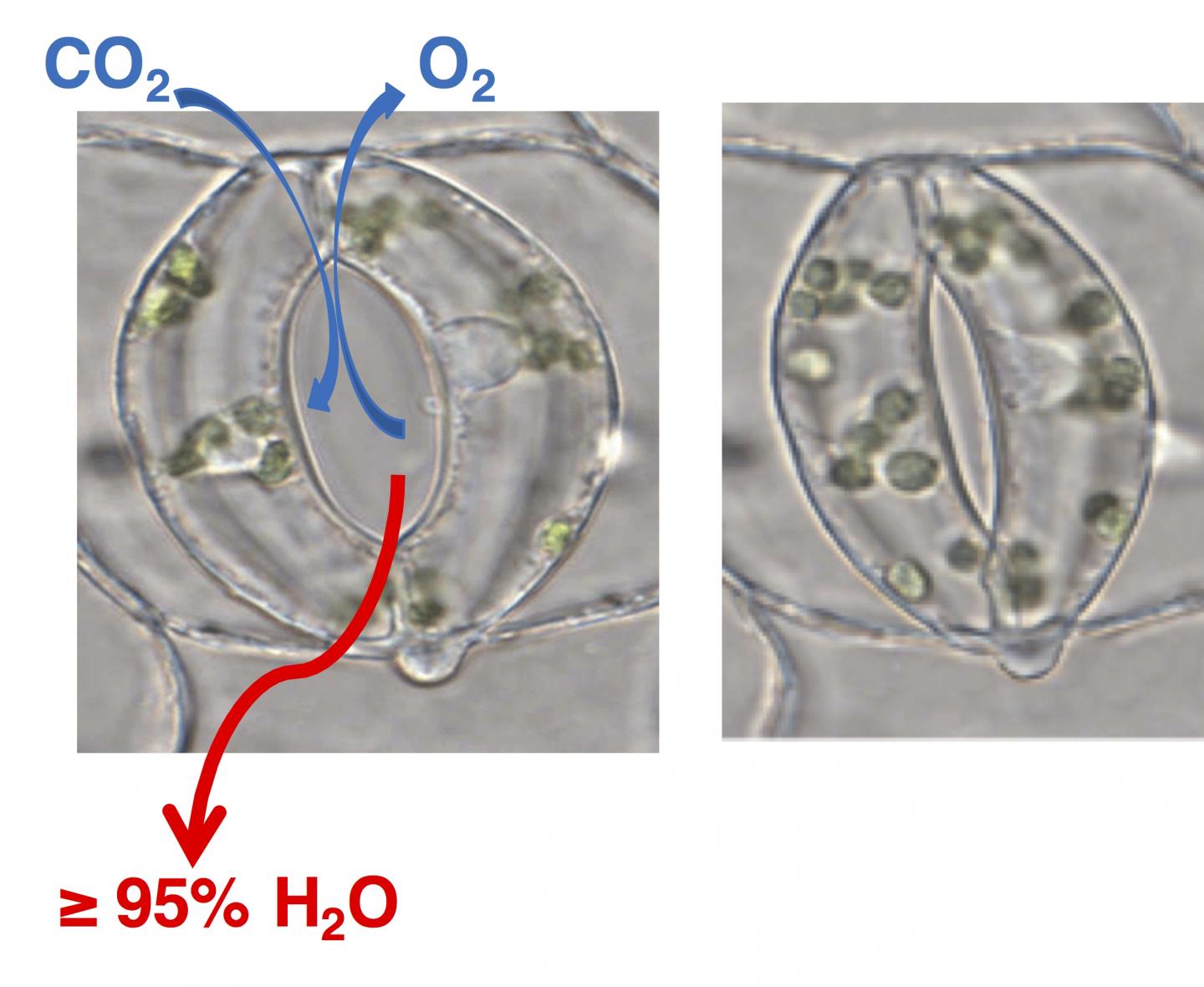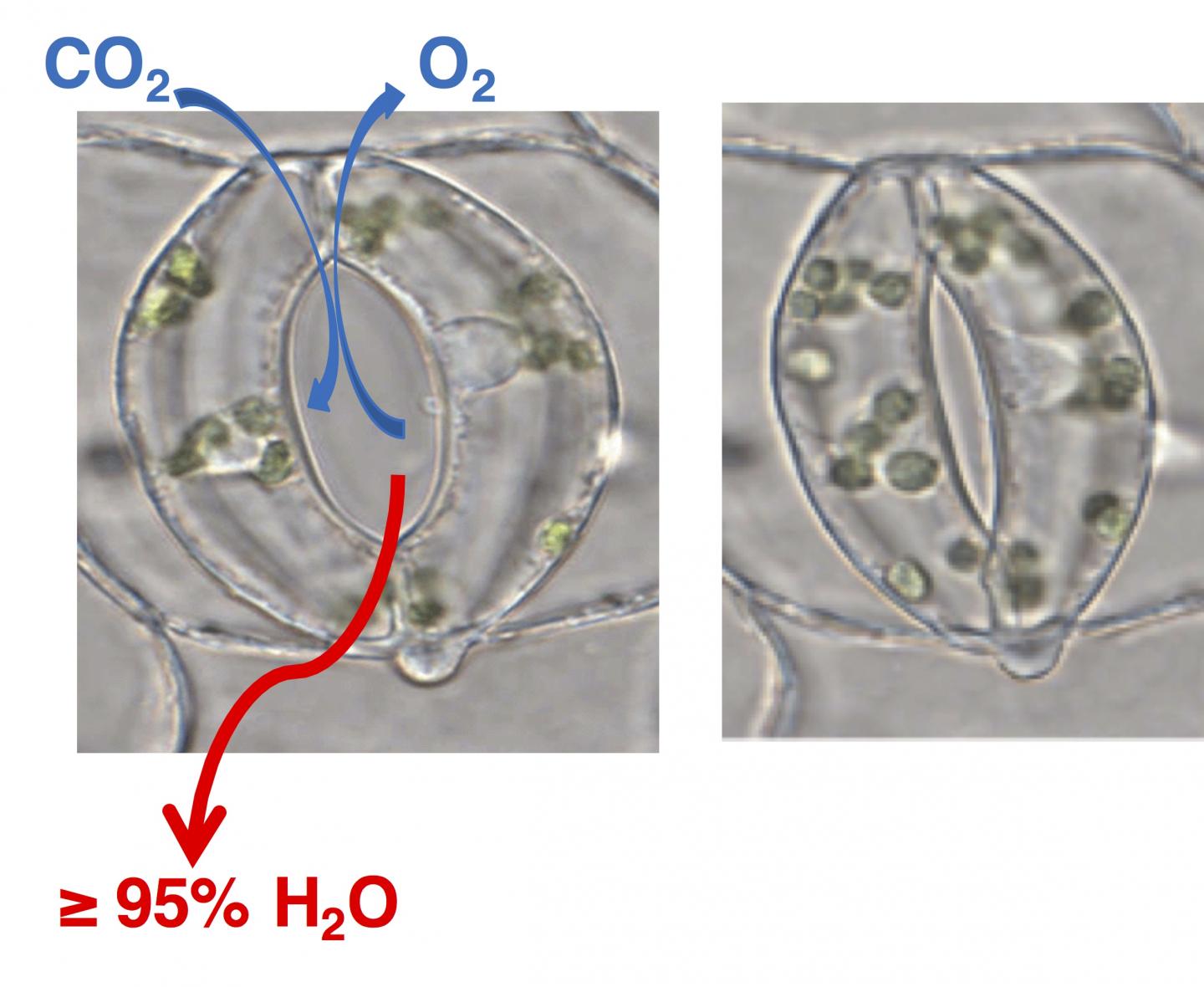
Credit: IBS
Plants breathe and "sweat" through stomata, microscopic pores found on leaves, stems and other plant organs. Through the stomata, plants take up carbon dioxide for photosynthesis and breathe out the products of this process, oxygen and water vapor. Group leader Dr. June M. KWAK and his colleagues at the Center for Plant Aging Research, within the Institute for Basic Science (IBS), identified a novel calcium channel and found out how it regulates stomatal closure. Published in Cell Reports, this discovery helps to clarify how plants maintain and adjust an adequate intracellular calcium level for their growth and breathing.
Calcium deficiency in humans can lead to weak hair, nails, osteoporosis and other serious symptoms, and calcium is essential for plants too. For example, blossom-end rot is a disorder found in tomatoes, watermelons, chili pepper, etc. caused by insufficient calcium in the soil. In plants, calcium contributes to several functions, including growth, differentiation and daily rhythms.
IBS scientists focused on the role of calcium in the opening and closing of stomata. They found that calcium concentration inside guard cells, which surround stomata pores, is influenced by proteins called glutamate receptor homologs (GLRs), in particular GLR3.1 and GLR3.5. GLRs got their names because they are structurally similar to animal glutamate receptors, which are activated by the neurotransmitter glutamate and play a role in learning and memory. The team found that GLR3.1 and GLR3.5 form calcium channels in the plasma membrane of guard cells.
IBS researchers produced Arabidopsis thaliana plants lacking GLR3.1 and GLR3.5 proteins and found that when grown in a medium with a concentration of calcium 95% lower than the normal soil, these plants have yellow dying inflorescences, similar to the blossom-end rot disorder. "These tips of inflorescence have cells that are rapidly growing and dividing, so they need a lot of calcium. However, plant cells are quite selfish with calcium, and they do not share it with other cells if they do not have enough," explains Kwak.
Using aequorin, a protein that senses calcium and emits light of different color depending on the concentration of calcium, IBS scientists found that mutant plants deficient in GLR3.1/GLR3.5 have 25% lower concentrations of intracellular calcium. Then, they used electrophysiological techniques to verify that GLR3.1/GLR3.5 channels are activated by the amino acid L-methionine.
Results from a series of further experiments clarified that L-methionine opens the GLR 3.1/3.5 calcium channels and allows calcium ions to enter the cell. The elevation in intracellular calcium, in turn, activates other membrane channels, like the reactive oxygen species (ROS)-activated calcium channels, leading to stomatal closure.
"In the future, we would like to understand the source of L-methionine, which type of cells provide it for the guard cells and in response to what kind of stimuli," explains Kwak.
###
Media Contact
Dahee Carol Kim
[email protected]
@IBS_media
http://www.ibs.re.kr/en/
############
Story Source: Materials provided by Scienmag





